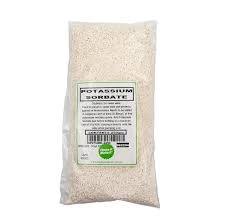
Exploring E635 Food Additive and Its Impact on Taste and Safety Standards
Understanding E635 The Flavor Enhancer in Our Foods
Food additives play a crucial role in our daily diets, often enhancing the flavor, texture, and shelf life of various products. Among these additives, E635, also known as disodium 5-ribonucleotide, is an intriguing ingredient that warrants a closer look. Commonly found in processed foods, E635 serves as a flavor enhancer and is particularly praised for its ability to improve the savory taste, making it a favorite in the food industry.
What is E635?
E635 is a flavor enhancer derived from the combination of sodium and ribonucleotides. It is commonly used in conjunction with monosodium glutamate (MSG) and other flavor enhancers to create a synergistic effect, amplifying the overall taste experience. This additive is characterized by its ability to evoke umami, the fifth basic taste, which is often described as a savory or meaty flavor. E635 is particularly useful in enhancing flavors in soups, sauces, snack foods, and seasonings.
How E635 Works
E635 enhances the taste by stimulating the taste buds more effectively than many other flavor enhancers available. When combined with other ingredients, it intensifies the natural flavors of food. This makes it an ideal choice for manufacturers looking to create more appealing products without the need for excessive salt or fat. The use of E635 helps to provide a savory depth to foods, making them more satisfying to consumers.
Food Products Containing E635
e635 food additive

You may encounter E635 in a variety of food products. It is commonly found in
1. Snack Foods Chips, crackers, and cheese puffs often use E635 to enhance their flavors. 2. Processed Meats Many pre-packaged meats and broths contain this additive to enhance their savory profiles. 3. Sauces and Condiments Barbecue sauces, salad dressings, and marinades may include E635 for added depth and flavor. 4. Frozen Meals Many frozen dinners utilize E635 to improve taste without adding excessive calories or fat content.
Safety and Regulations
The safety of food additives is carefully regulated in many countries. In the European Union, E635 is recognized as safe for consumption, although its use is tightly controlled. The European Food Safety Authority (EFSA) evaluates all potential health effects of food additives, and E635 has been deemed safe when consumed within the established guidelines. However, as with many food additives, some individuals may be sensitive to E635, experiencing reactions similar to those associated with MSG, such as headaches or nausea.
Conclusion
In summary, E635 serves as an effective flavor enhancer widely used in the food industry. Its ability to intensify the umami taste makes it a valuable ingredient in creating flavorful and satisfying food products. While generally recognized as safe, consumers should remain informed about the additives in their food. Understanding E635 and its functions can empower individuals to make informed dietary choices, allowing for a balanced approach to enjoying flavor-enhanced foods. As we continue to navigate the complex world of food additives, being aware of ingredients like E635 helps ensure that our meals are both delicious and health-conscious.
-
Pure Sodium Dichloroisocyanurate Dihydrate | Powerful DisinfectantNewsAug.29,2025
-
Industrial Chemicals: Quality & Purity for Every IndustryNewsAug.28,2025
-
Nitrile Rubber Honoring Strict Production StandardsNewsAug.22,2025
-
Aspartame Ingredients Honoring Food Safety ValuesNewsAug.22,2025
-
Fertilizer for Balanced Plant NutritionNewsAug.22,2025
-
Cyanide Gold Processing with High Purity AdditivesNewsAug.22,2025
-
Formic Acid in Textile Dyeing ApplicationsNewsAug.22,2025
Hebei Tenger Chemical Technology Co., Ltd. focuses on the chemical industry and is committed to the export service of chemical raw materials.
-

view more DiethanolisopropanolamineIn the ever-growing field of chemical solutions, diethanolisopropanolamine (DEIPA) stands out as a versatile and important compound. Due to its unique chemical structure and properties, DEIPA is of interest to various industries including construction, personal care, and agriculture. -

view more TriisopropanolamineTriisopropanolamine (TIPA) alkanol amine substance, is a kind of alcohol amine compound with amino and alcohol hydroxyl, and because of its molecules contains both amino and hydroxyl. -

view more Tetramethyl Thiuram DisulfideTetramethyl thiuram disulfide, also known as TMTD, is a white to light-yellow powder with a distinct sulfur-like odor. It is soluble in organic solvents such as benzene, acetone, and ethyl acetate, making it highly versatile for use in different formulations. TMTD is known for its excellent vulcanization acceleration properties, which makes it a key ingredient in the production of rubber products. Additionally, it acts as an effective fungicide and bactericide, making it valuable in agricultural applications. Its high purity and stability ensure consistent performance, making it a preferred choice for manufacturers across various industries.





